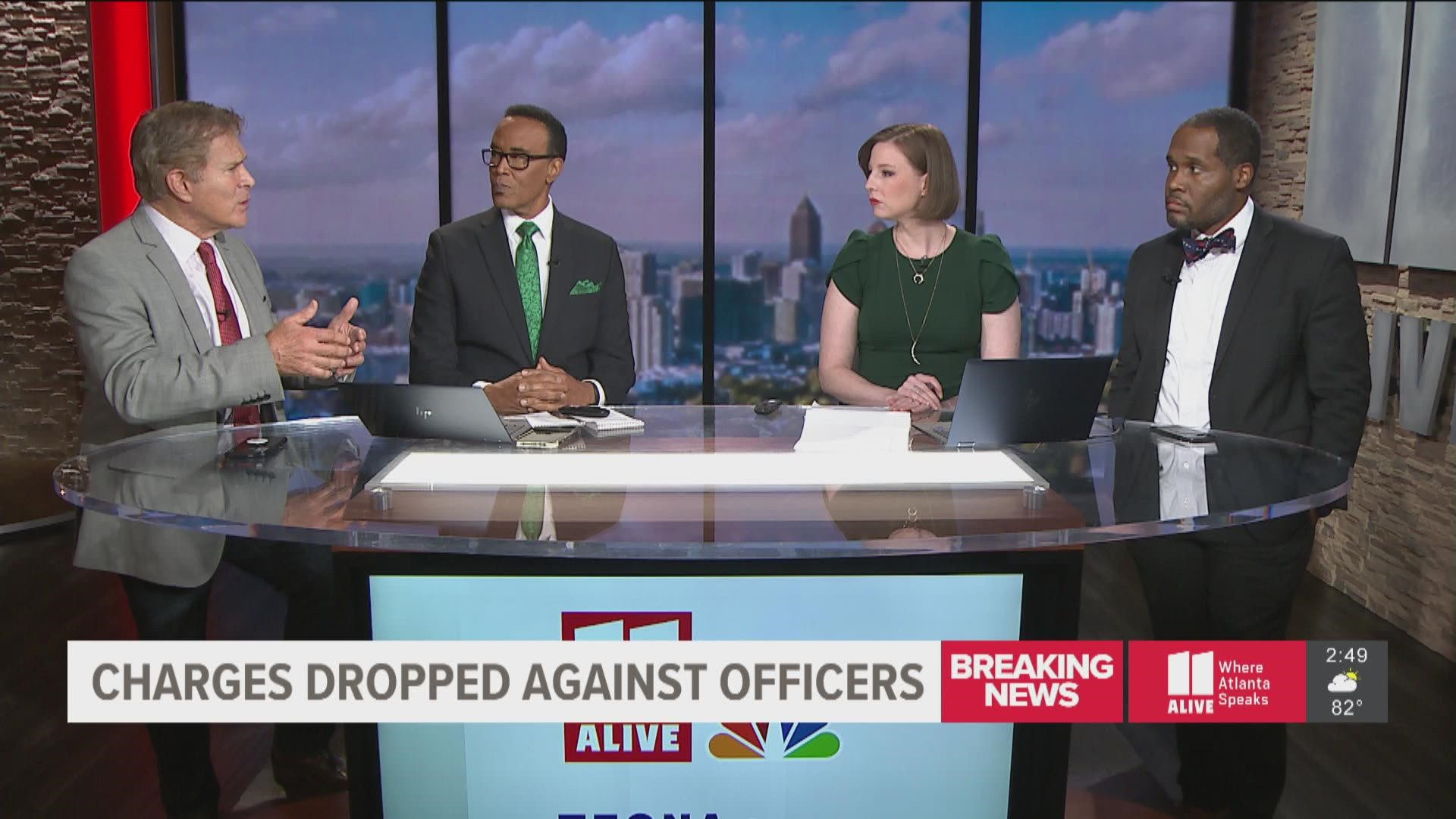ATLANTA — With the news that charges have been dropped against Atlanta officers in the police shooting death of Rayshard Brooks, 11Alive is revisiting the events on the night of June 12, 2020.
Brooks' death came at the peak of protests for racial justice and police accountability and set off nights of demonstrations, becoming one of the most politically and socially charged moments from those few months in Atlanta.
11Alive spoke with two criminal defense attorneys, Gerald Griggs and Darryl Cohen, following the prosecutors' decision. The two raised points on both sides of the conversation.
When prosecutors determined on Tuesday that the APD officers would not go to trial, part of that decision was Brooks' taking and using the officer's taser. Prosecutors said that a taser in the hands of an untrained civilian, being used against an officer, makes it a deadly weapon.
"He became a threat," Cohen said. "He committed a felony. He had a taser; he used the taser."
Griggs disagreed with Cohen and argues that by law, a taser is not a deadly weapon. He then mentions that Brooks was shot in his back while running away.
"At the point that he was running away, he was not a threat to anyone else. He did not have a lethal weapon, he was running away," Griggs said.
"They could have found him, but to shoot him in the back twice doesn't sit well with the individual that's running away," he added.
Griggs then said the taser was not even functional, but Cohen pointed out that officers wouldn't have known that.
"They didn't know that," Cohen argued. "You (Griggs) get down there, and you get in the moment."
Below | Watch their full conversation
11Alive Investigator Madison Carter walked through the key moments from the night Brooks was shot in a Wendy's parking lot.
- First, Officer Devin Brosnan got out of his patrol car to tap Brooks' window, where he was asleep at the wheel in the Wendy's drive-thru.
- Brosnan then told Brooks to move his car. Minutes later, Brooks fell back asleep, as the officer told him to park his car.
- After parking, Brosnan follows back up with him, asking him if he's had too much to drink. He then calls for a DUI officer.
Tanya Miller, a criminal defense attorney, said to this point, "If he's asleep in a drive-thru, they certainly had the legal authority to go up to the car to make sure he was OK, that he wasn't hurt, he wasn't in distress."
- Minutes later Officer Garrett Rolfe arrived. Brosnan caught him up on things.
- Rolfe then began to question Brooks, asking him where he was and how much he had to drink. Brooks said he thought he was in Forest Park and claimed to have had one drink.
- Rolfe then began a field sobriety test and, after that, continued to question Brooks and then performed a breathalyzer test.
- "I think you've had too much to drink to be driving," Rolfe told Brooks, then began to arrest him.
Miller said: "If an officer has probable cause to make an arrest and there is resistance to that authority, they can use a commensurate amount of force to effect the arrest."
- Brooks began to struggle away from Rolfe, with Brosnan then also grabbing at him.
- "Stop fighting. Stop fighting. You're gonna get tased. Stop fighting," one of the officers told him.
Miller: "Certainly the officer could have thought or believed that Brooks was trying to get his gun, or was in a position to get his gun, and therefore, I think the argument for escalating the use of force would have been stronger in that moment."
- Then Brooks ran off, grabbing Brosnan's Taser and discharging back toward him.
Miller: "I think the question of his dangerousness kind of varies from moment to moment as we're watching this police encounter... there is case law out there that says pretty clearly that tasers are not deadly weapons."
- At that point, Rolfe shot and hit Brooks in the back, killing him.
Miller: "Is it reasonable for the officer to believe that he has to do that in order to protect himself from a commensurate level of deadly force or substantial or significant bodily injury? And so reasonableness is always a little bit of a gray area because, you know, people can differ on what is reasonable."
The officers and Brooks calmly interacted for more than 40 minutes, and then in less than one minute the struggle and shooting occurred. Miller dissected what Rolfe and Brosnan could have done differently in that moment.
"Officers could have, in that moment, when he is offering to leave his car, offering to walk home and sleep it off, they could have obliged him," she said. "We have to sort of analyze this in the context of the discretion that the officers have, to escalate a situation or to de-escalate the situation."
Ultimately though, the decision on whether to go ahead with charging Rolfe with murder and Brosnan with aggravated assault came down to special prosecutor Pete Skandalakis - his decision being not to.

